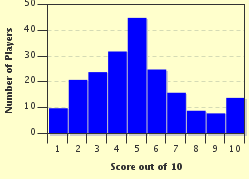Quiz Answer Key and Fun Facts
1. Which US President once had to get involved in a range war in Wyoming by sending troops of the US cavalry to stop the "Johnson County War"?
(Hint: two Presidents shared this last name.)
2. Have you ever heard of the Texas Hoodoo War? No?
What about the Texas Mason County War? No?
Well, they are one and the same.
This "war" was between native Texans, and people of another nationality. Of what nationality were these enemies of the native Texans?
3. What is the officially adopted state song of Kansas as of June 30, 1947,
a song that is commonly regarded as the un-official anthem of the American West?
4. Who signed a law concerning cattle rustling with the following phrase attached: "If the offender is an alien, he shall be deported immediately upon the completion of the service of his sentence without further proceedings"?
5. "An old cowpoke went riding out, one dark and windy day;
Upon a ridge he rested as he went along his way,
When all at once a mighty herd of red-eyed cows he saw,
plowin' through the ragged skies, and up the cloudy draw.
Yipi-i-yay; Yip-i-yi-oh... ghost riders in the sky."
Who wrote this old American Western classic song, "(Ghost) Riders In The Sky"?
6. What man, who is more or less represented by a character that appears in the book and movie "Lonesome Dove", is generally credited for inventing the first "chuckwagon", a kind of meals-on-wheels wagon that was used on trail rides in the days of the Old West in the U.S.?
7. One of the great cattle drive trails, the Chisholm Trail, was finally closed in 1884-85. This marked an end of a legacy of the Old West, but by what means was it closed?
8. Most cowboys were never able to make enough money to buy their own herds of cattle, even after two or three years of experience on trail rides. Approximately how much could the average cowboy expect to make in the mid-to-late 1800s?
9. Why was open-range grazing such an integral part of the American West in the 1800s?
10. Cattle ranching isn't the only type of ranching there is. Sheep are also ranch animals. Can you name the two countries that rank as the top producers of sheep in the world?
Source: Author
logcrawler
This quiz was reviewed by FunTrivia editor
bloomsby before going online.
Any errors found in FunTrivia content are routinely corrected through our feedback system.

